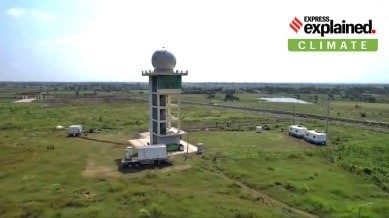Free Courses Sale ends Soon, Get It Now


Free Courses Sale ends Soon, Get It Now



Disclaimer: Copyright infringement not intended.
Context
Recently the first phase of India’s Atmospheric Research Testbed in Central India (ART-CI) was inaugurated at Silkheda in Sehore district, located about 50 km northwest of Bhopal in Madhya Pradesh.
Details
Atmospheric Research Testbed (ART)
Development of ART
Importance of Atmospheric Research Testbed
Important to have data about monsoons over central India
Why Madhya Pradesh?
Instruments are ART equipped with
|
PRACTICE QUESTIONS Consider these statements with reference to monsoon in India.
How many of the statements given above is/are correct?
Answer B |
© 2024 iasgyan. All right reserved